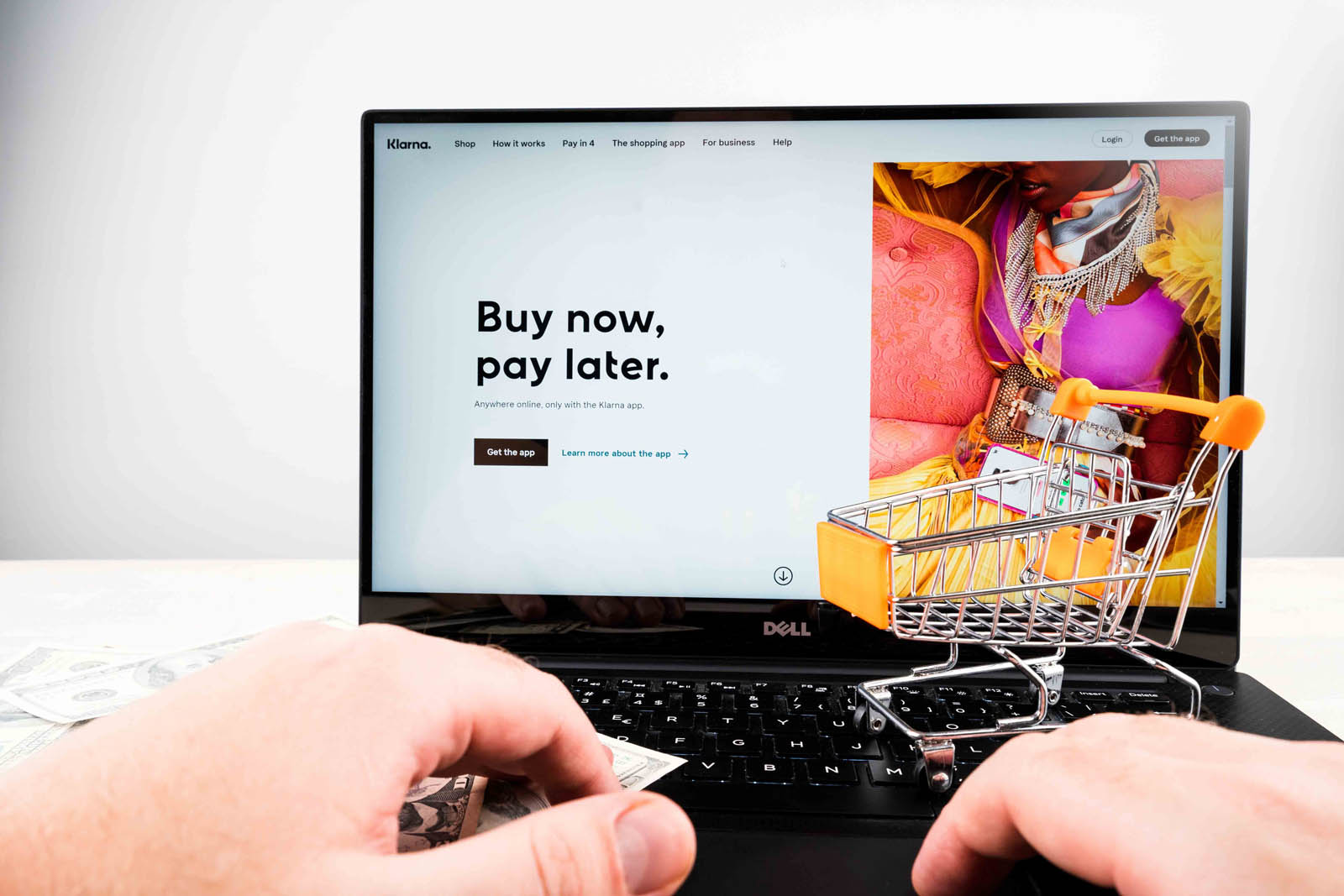
Buy Now, Pay Later Statistics and User Habits
Filed Under: Shopper, Financial Services, Quantitative Research
Buy Now, Pay Later Statistics and User Habits
When it comes to financing options, consumers now have alternatives to credit cards in the form of “Buy Now, Pay Later” services. These services such as Affirm, Afterpay, Klarna and PayPal Credit allow consumers to make interest-free installment payments on a purchase over the course of several weeks. According to respondents, 60% say they have used a Buy Now, Pay Later service. Of those, nearly half (46%) are currently making a payment or payments through one of those services.
With consumers spending more time shopping online at home during the COVID-19 pandemic, we were interested in seeing how many have used Buy Now, Pay Later services. We recently surveyed consumers across the country to get insight into their experiences and types of purchases they’ve made through these types of services.
Online Shopping During COVID-19 With Buy Now, Pay Later
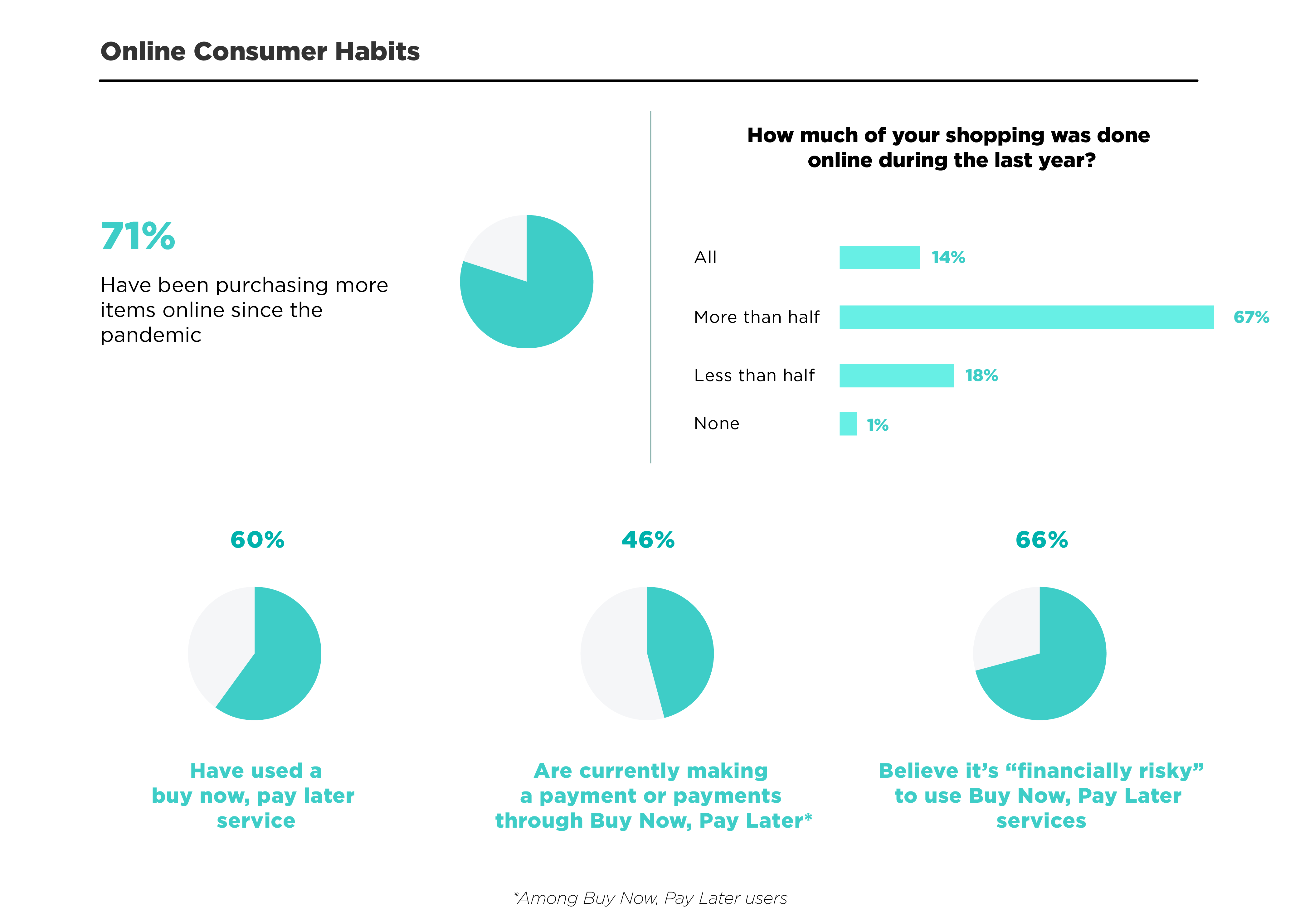
Overall, 71% of consumers surveyed say that during the pandemic, they have been making more online purchases. In fact, roughly two-thirds (67%) say “more than half” of their shopping was done online during the last year.
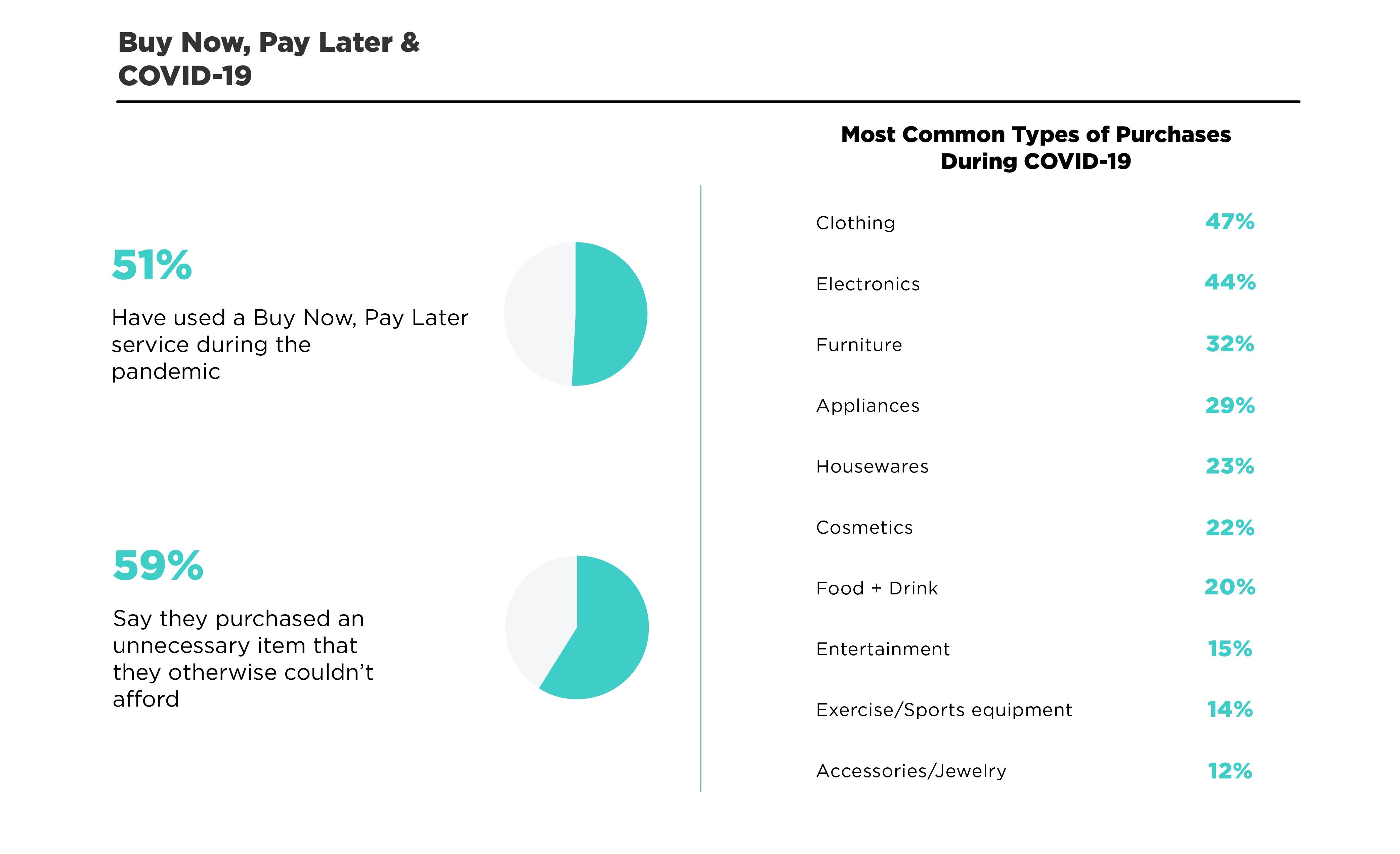
Along with consumers spending more time shopping online during the pandemic, many have also been using Buy Now, Pay Later to make these online purchases. In fact, 51% of consumers say they used Buy Now, Pay Later services during the pandemic.
Clothing and electronics lead the way as the most common types of purchases at over 40% each, followed by furniture (32%), appliances (29%), housewares (23%), and cosmetics (22%).
What Are the Most Popular Buy Now, Pay Later Services?
When it comes to Buy Now, Pay Later services, consumers have a variety of options to choose from including PayPal Credit, Afterpay, Affirm and Klarna. There are even services like this for travel-related purchases, like Uplift, which can be used to purchase flights, cruises and vacation packages.
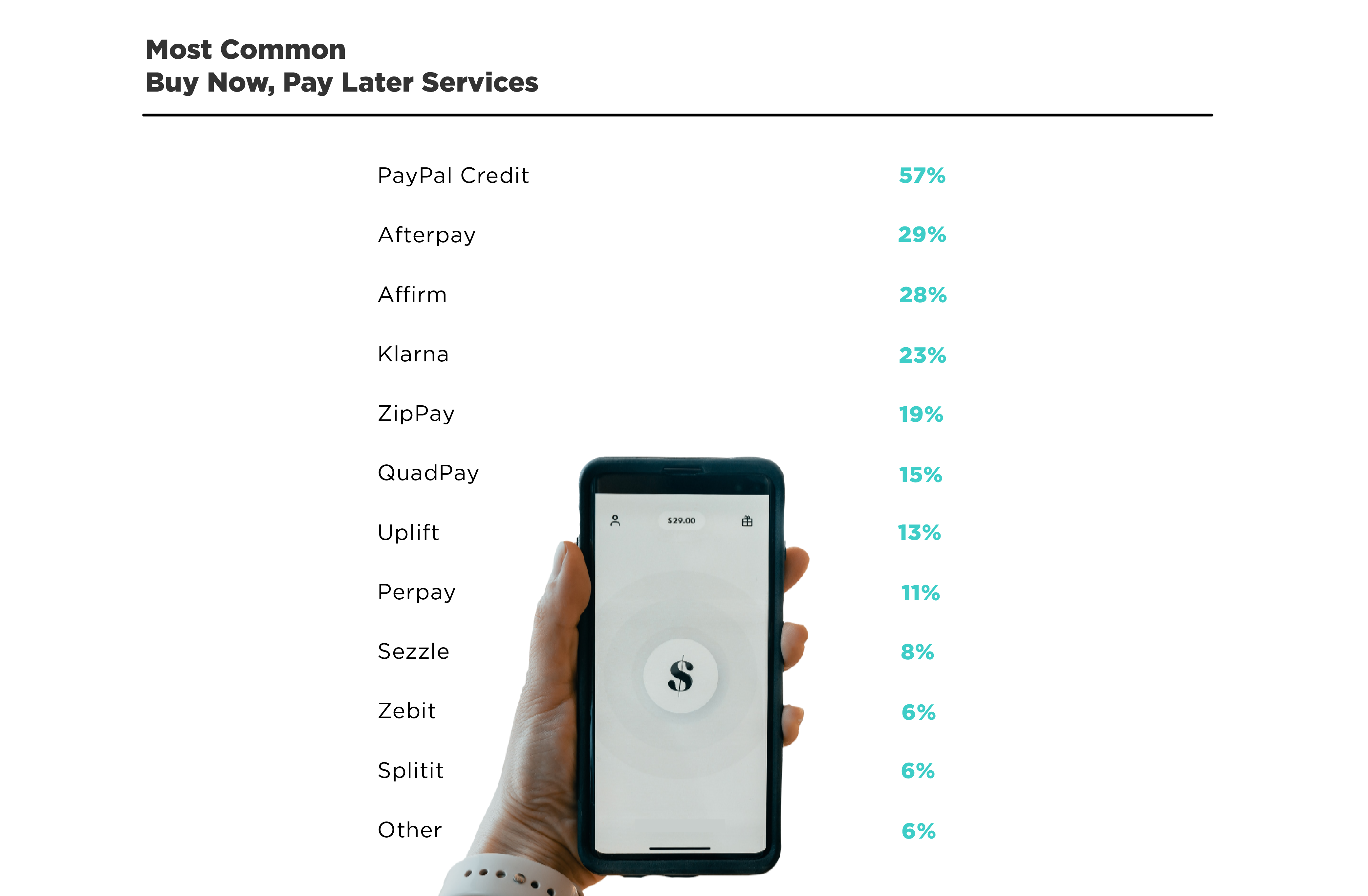
According to respondents, PayPal Credit leads the way as the most popular service among users (57%), with other services trailing behind: Afterpay (29%), Affirm (28%), Klarna (23%) and ZipPay (19%).
How Often Do Consumers Use Buy Now, Pay Later Services?
Among Buy Now, Pay Later users, 45% use the service frequently (at least once a month or more); and when shopping online almost half (47%), say they use it “most of the time” or every time they shop for an item.
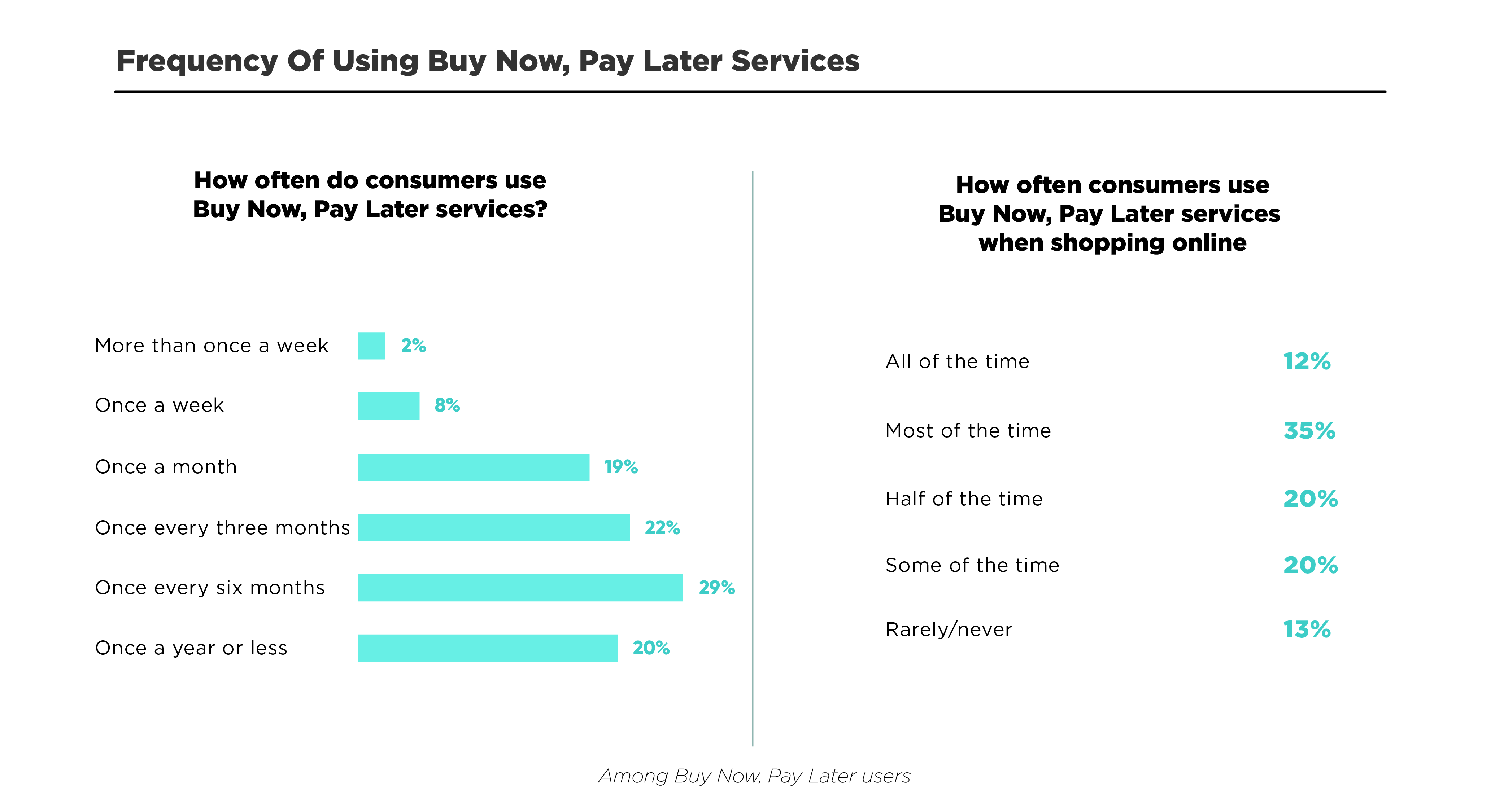
Buy Now, Pay Later Payments
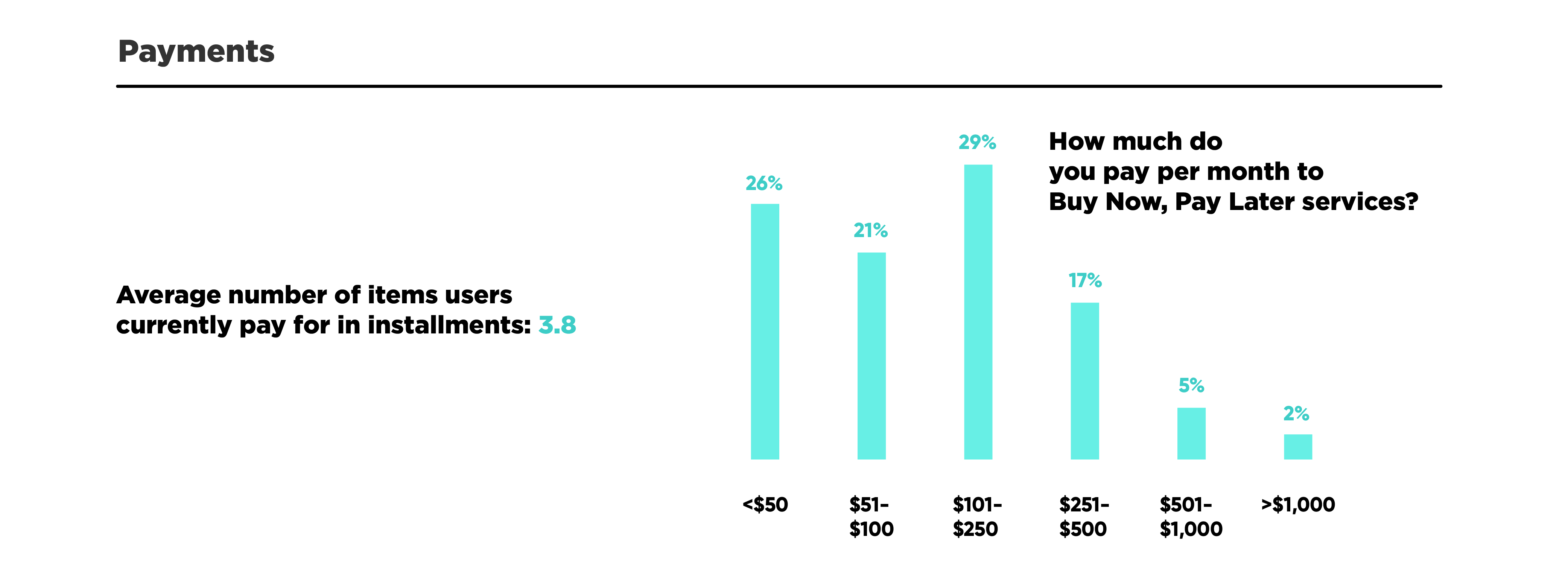
Typically, Buy Now, Pay Later services give users the option to pay installments on a weekly, bi-weekly or monthly basis. Among users surveyed, the average number of items users say they are currently paying for in installments is 3.8. Overall, people say that their total debt owed on average is $883.
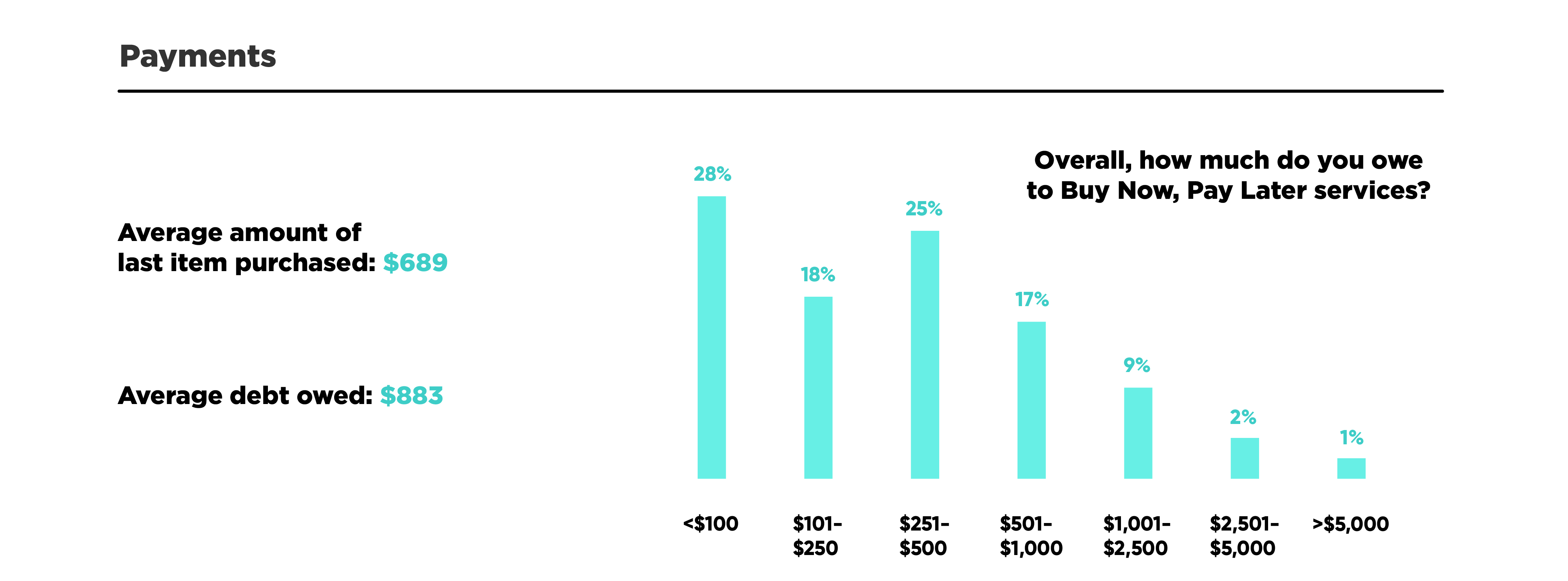
It is interesting to note that more than half (57%) of users say they have regretted making a purchase through Buy Now, Pay Later because the item was too expensive. Obviously, when consumers buy an item outside of their budget this can lead to missing payments; about half say they are currently behind on a payment, and almost the same proportion say they are likely to make a late payment within the next 12 months. Therefore, it’s not surprising that both users and non-users alike think that using these types of services are financially risky (roughly two-thirds of users and non-users).
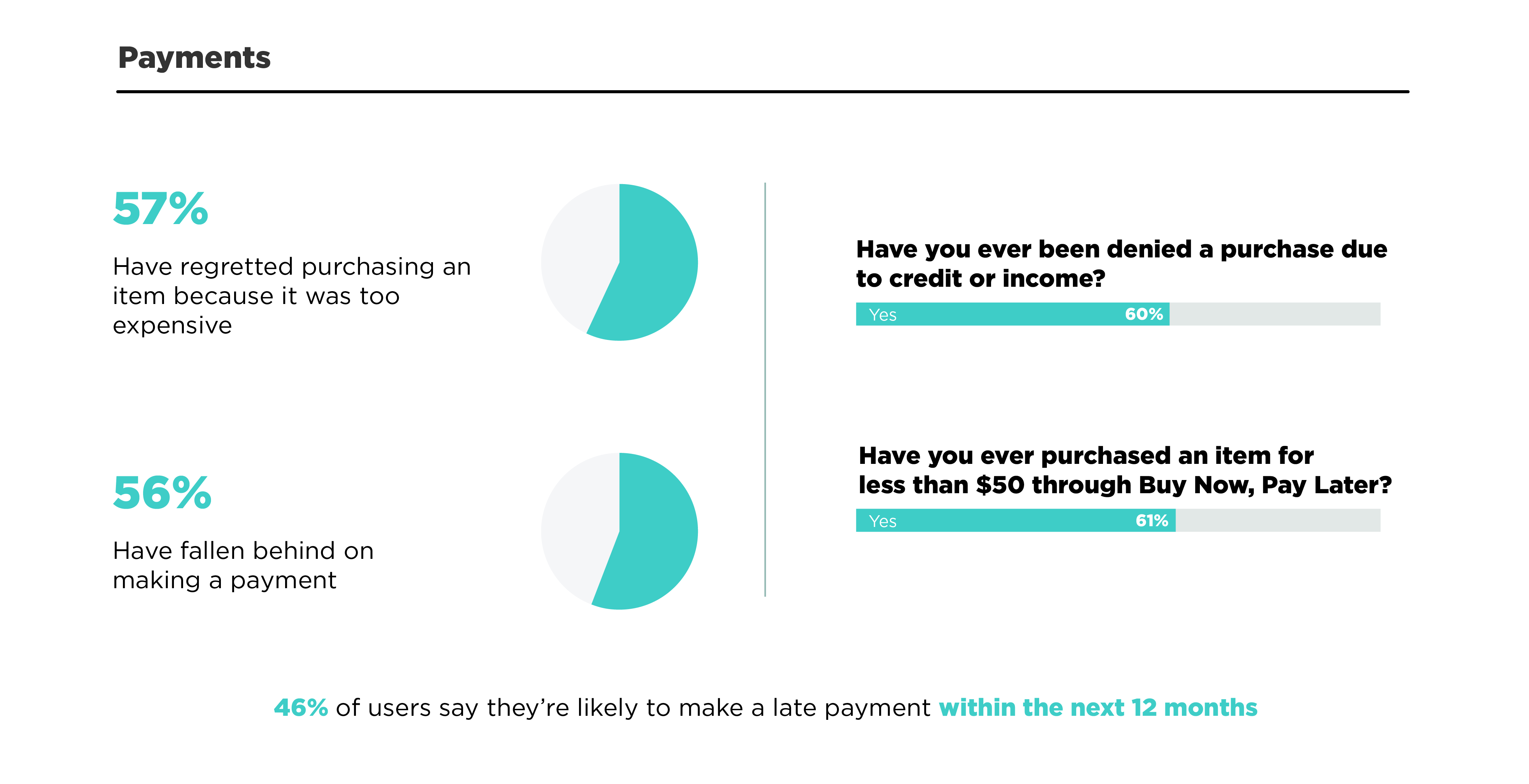
Credit Cards or Buy Now, Pay Later?
How popular will these services become? According to 38% of users, Buy Now, Pay Later services will eventually replace their credit cards, and more than half (56%) say they prefer Buy Now, Pay Later compared to using credit cards for purchases.
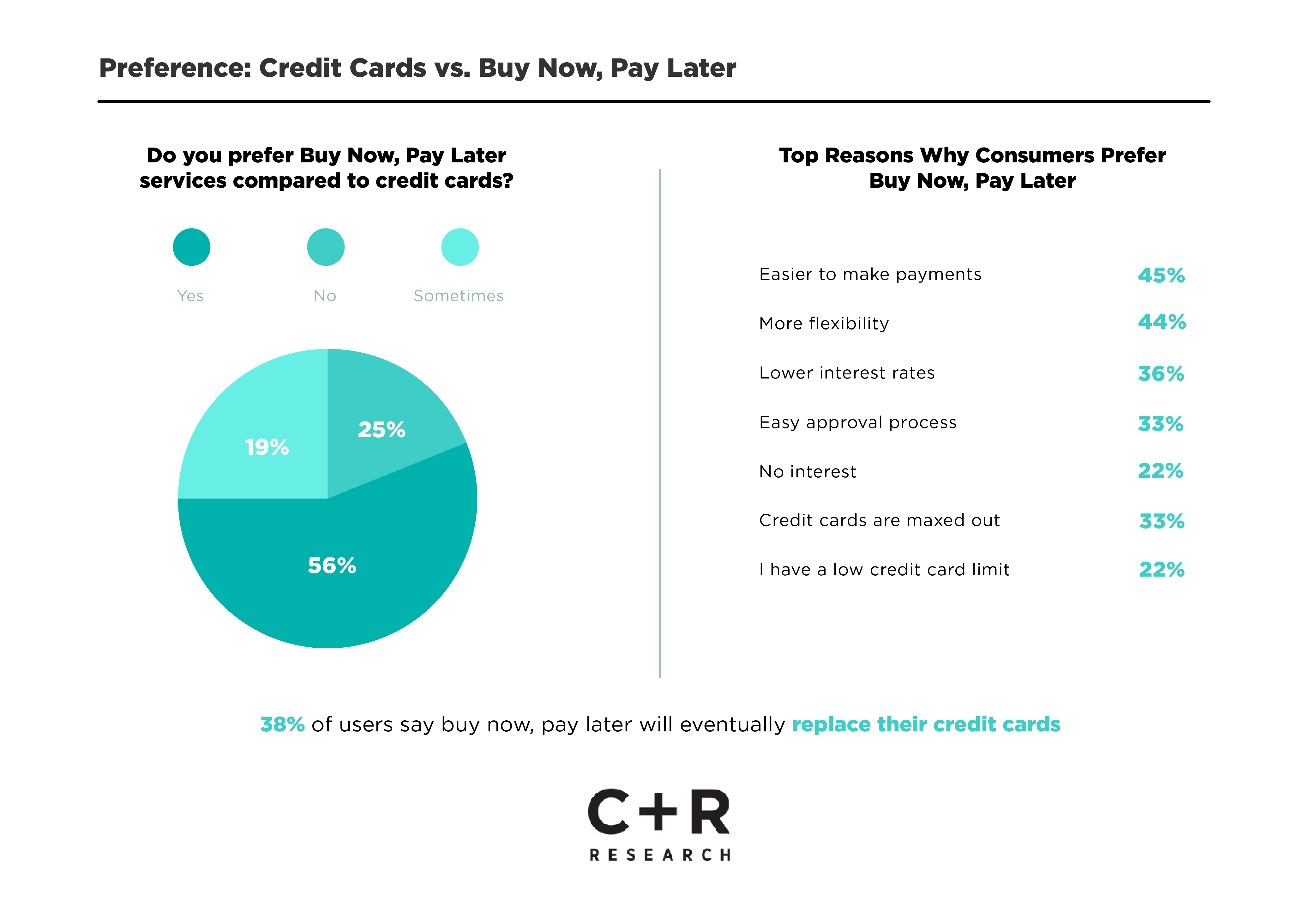
The top reasons users prefer Buy Now, Pay Later services over credit cards are that it’s easier to make payments (45%), and there’s more flexibility compared to credit cards (44%); the services offer little or no interest (36%) and the approval process is easy (33%).
Conclusion
Brands such as Target, Wayfair, Lululemon and Urban Outfitters have incorporated Buy Now, Pay Later options. So, it’s clear brands understand the benefits of offering alternative payment options for their customers. As consumer shopping habits continue to evolve, it will be interesting to see how big of a disruptor Buy Now, Pay Later services become.
Methodology
For this report, we surveyed 2,005 self-reporting online consumers via Amazon’s Mechanical Turk survey platform from March 25 to April 12, 2021. 51% were male and 49% were female with an average age of 37. Income: Under $20K: 14%; $20-40K: 26%; $40-60K: 25%; $60-80K: 18%; $80-100K: 8%; Over $100K: 9%.
Employment status: Full-time: 72%; part-time: 13%; unemployed due to COVID-19: 2%; unemployed not due to COVID-19: 7%; other: 6%. Note: Amazon Mechanical Turk respondents may be more likely to use Amazon services such as Amazon Prime.
explore featured
Case studies
